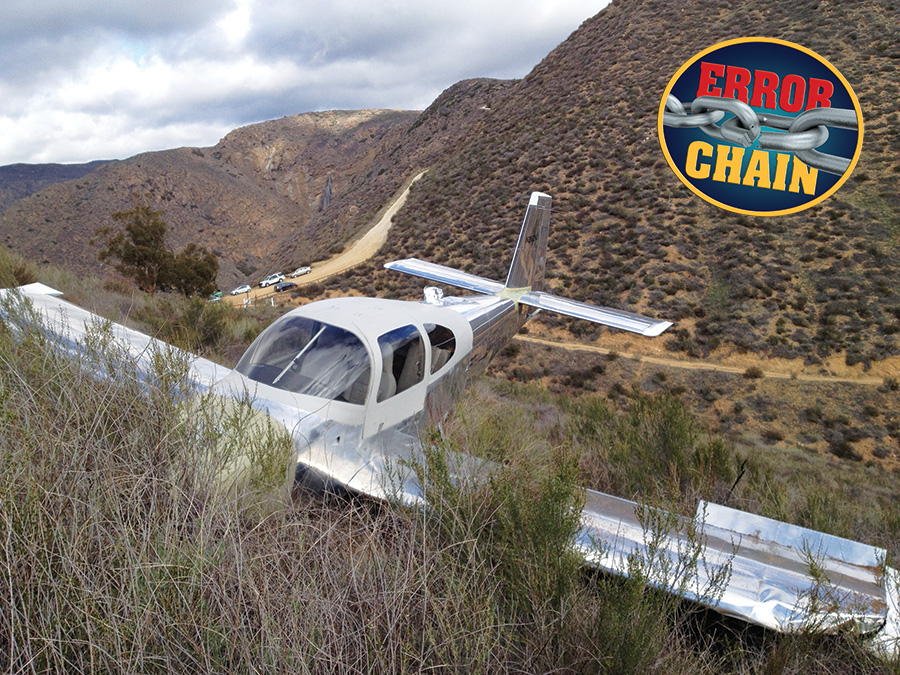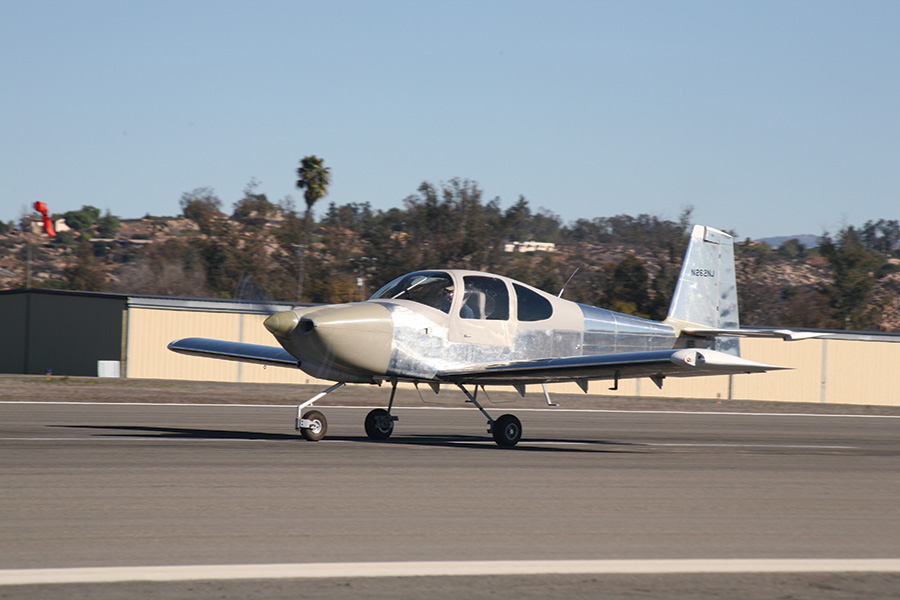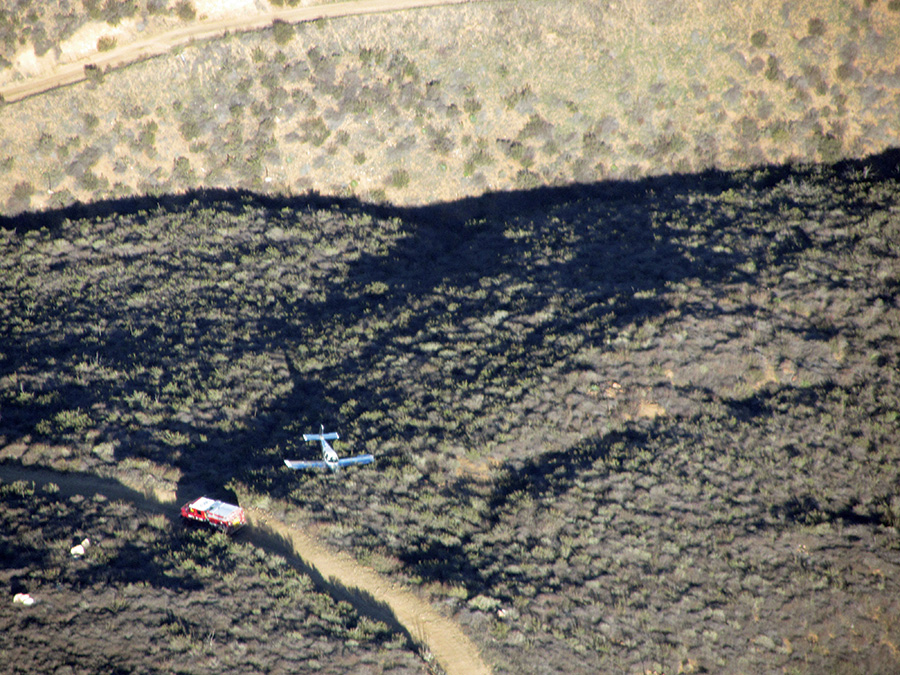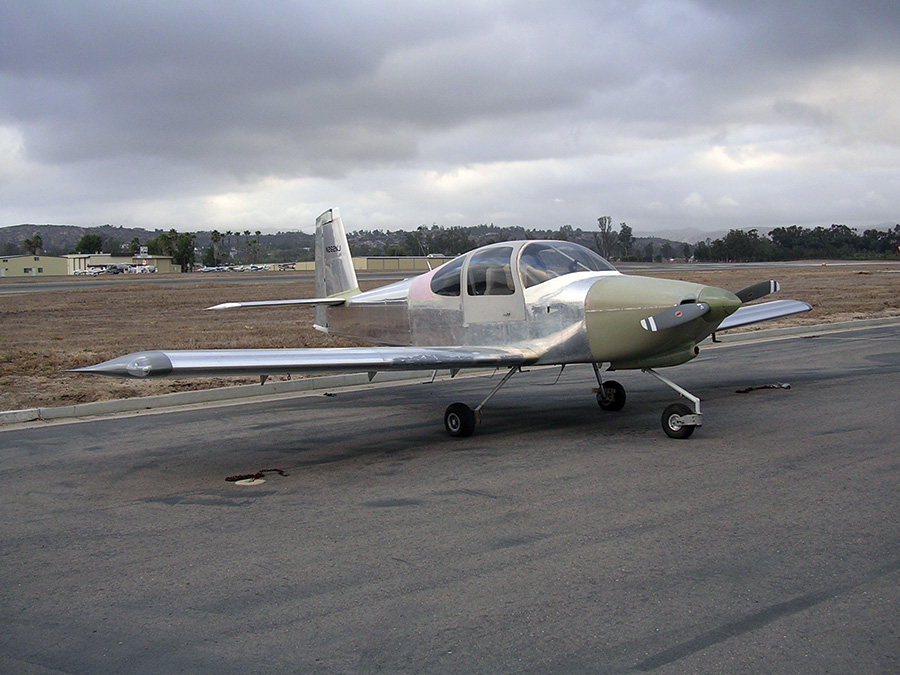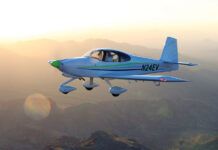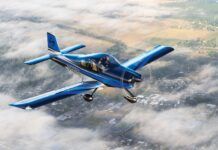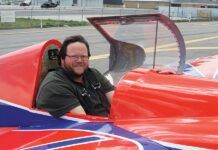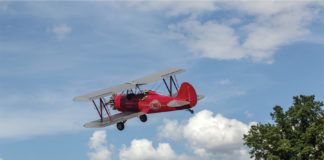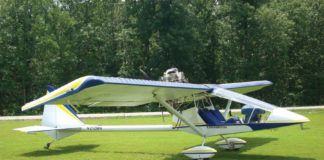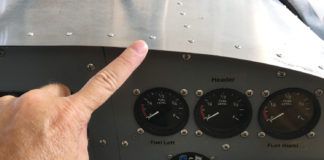My beautiful RV-10 flew for the first time in late December 2012 after two years of hard work. It was my third kit aircraft, having completed an RV-6A about 15 years ago (with 1,700 flight hours on it now) and a Murphy Moose about nine years ago.
On my fourth flight during the RV-10’s Phase I testing, a small oil line detached from its fitting on the engine, causing rapid and complete loss of oil and pressure, followed by engine seizure. At the time, I was about 20 miles from my flight-test base at Ramona, California. The engine failure occurred at an altitude of 8500 feet over rugged, mountainous terrain. Only four minutes passed from when I first noticed the flashing low oil pressure gauge on my Garmin G3X to when I crashed into a rocky hillside within Cleveland National Forest.
I survived the crash and walked away with only a few bruises. The plane, unfortunately, sustained heavy damage. Besides a destroyed engine and bent prop, its nosewheel was sheared off, the maingear were bent back, the fiberglass engine cowling and air intake were crushed, and both wingtips and leading edges were torn up. With only six hours on its Hobbs, the plane looked a total wreck.
At the time of the crash, I’d been a private pilot for 36 years and had accumulated roughly 3,000 hours as pilot-in-command. This crash reaffirmed many lessons taught to us all since we were student pilots. But, it also taught me some important new lessons about Phase I flying of an Experimental plane, and about living through a terrifying experience to once again enjoy the privilege of flight. I was asked to share this list. My list includes 20 lessons learned, which are more or less organized in chronological order.
Before Takeoff:
1. Know the plane’s best glide and final approach speeds before its first flight.
This information is surprisingly easy to find, even for a kit plane. A Google search on the Internet should lead any builder to these important numbers, as well as expected stall speeds for their kit. Write them down and have them with you and memorized when you take that initial flight.
2. Carry a handheld com radio.
After the crash, I grabbed my handheld and jumped out of the plane fearing fire. I then tuned-in Ramona tower (who I had been talking to on the way down) to report that I was OK, with no serious injuries. An orbiting RV-4 pilot, Frank Britton, heard my report and—because I wasn’t in line-of-sight and too low—relayed it to the tower. He also fixed my position by staying overhead and talking to SoCal Approach radar so that rescue vehicles could find me.
3. Preflight your engine compartment using visual, touch, and torque checks.
I made it a point to remove the engine cowling and check all fuel and oil lines before every flight during Phase I testing. While I looked at everything, and ran my hand along all hoses to feel for leakage, I did not also check their torque tightness. That was a mistake. Post-crash inspection suggested that the likely cause of the loose oil line was that it was not torqued enough. Although it had flown without any apparent leakage for over four hours, it decoupled on that fateful last flight.
4. Install the best seatbelt/harness that you can.
Luckily, I installed a Crow five-point seatbelt/harness for the pilot and each occupant. These were superb, and with the standard Van’s seats (which include headrests), I survived the 18 G deceleration of the crash with just a sore neck and minor bruises.
5. Include a fire extinguisher with your gear.
Ironically, I crashed near the origin of the Witch Creek fire, which burned 200,000 acres near San Diego in 2007. Luckily, the fuel system in my RV-10 stayed intact, and there was no release of avgas. But, had there been a fire? Without a fire extinguisher, you’d be standing there watching as your pride-and-joy immolated itself and became the source of the latest disastrous wildfire.
Aerial view of crash scene showing first responding fire truck. Luckily, the fuel lines stayed intact.
During the Emergency:
6. Fly the plane.
This is really lesson-learned number one. We’re all taught to do this since our first flight lesson. It’s especially important during an emergency when panic and disbelief are competing with all that flight training. Keep your airspeed above stall and wings level. Establish a good glide; search for a landing zone.
7. Believe your gauges.
Although we all suffer from denial when the gauges give us a scary report, believe them and take quick and appropriate action. Early in my emergency, part of me denied the reality that the oil pressure gauge was showing. Its readings weren’t confirmed as true until the plane’s constant-speed prop spun up due to no oil. But, by then, engine failure was only seconds away. The flashing low oil pressure gauge gave me perhaps two more minutes to find a solution to my emergency.
8. Talk to Air Traffic Control.
The first thing I did after seeing the dramatically-dropping oil pressure was to call Ramona tower and advise the controller of my predicament, request an expedited approach, and then declare an emergency. He helped me try to find the nearest airport. And, although none were near enough, my communicating with him helped dampen my fear by simply having someone calm to talk to. He was my link to “normal” rationality.
9. Give status reports as you descend.
I talked to the tower as I went down, giving the controller my bearing, DME distance, and altitude at various intervals. This helped by allowing Britton’s RV-4 to find me, but also gave me something to do that felt more routine and controlled.
10. Avoid distractions.
Twice the tower asked that I switch my transponder to 7700 so that SoCal Approach could fix me on its radar. Initially, I looked down on the still-unfamiliar G3X to figure out how to change squawk codes. As I did this, I was oblivious to what the plane was doing in terms of airspeed and attitude. With a jolt, I then realized: forget changing the code, and fly the plane! I returned my focus back to watching airspeed and a place to land. I politely told the tower “unable” and suggested that I was pretty busy with other tasks.
11. Work to find the best possible landing zone.
Within seconds after engine failure I realized that there were no airports within gliding distance, and that the wilderness below would be treacherous. But, I kept on looking and assessing. As I approached a very steep canyon in the last minute of flight, I banked to avoid entering it—a maneuver I believe helped to save my life. Eventually, I found a narrow jeep trail on a ridgeline, which I followed to the ground. It wasn’t ideal, but it was something, and better than the surrounding boulders, trees, and hills.
12. Fly the plane to the ground.
As I came within 75 feet of the ground, I rounded a hill to see a grove of tall trees and a few parked SUVs directly in my glide path. I gently banked and turned the plane as I swooped by them, maybe 25 feet off the deck. I then flared as gently as I could, hitting the sloped ground at a few mph above stall.
After the Crash:
13. Be able to switch off your ELT.
I was unable to do this, even though I tried to turn the ELT off via the instrument panel switch. Hearing the ELT’s signal, the USAF did their job, notifying my listed contact about the crash, and noting its location for rescue personnel. But, later that evening, I was called by the on-duty officer who politely asked that I shut the signal off. That required a heart-breaking return to the crash site early the next morning, followed by a few hours of work dismantling a bulkhead to get to the ELT. (I can’t imagine what would have happened had I been injured!)
14. Mark your location with a GPS.
As I mentioned in Lesson 13, I had to return to the crash scene. It was miles from the nearest paved road and located within a National Forest, reachable only from a network of dirt jeep trails. Luckily, I had used a first responder’s GPS to record the location, and it was surprisingly easy to find again using my car’s GPS.
15. Be prepared to fill-out a lot of forms (so be legal and current).
The follow-up paperwork for an airplane crash makes an automobile crash look like child’s play. It seemed that everybody wanted a form filled out. Fortunately, I was current with flight experience, my medical, and my biennial. A few agencies (NTSB and FAA) and my insurance company all wanted copies of my medical and logbook to demonstrate compliance. I was glad that all were in order.
Unexpected Lessons:
16. To prepare for the mental challenge of a crash, make about 1000 skydives.
In the months since I crashed, I’ve reflected a lot on those terrifying four minutes. I’ve realized that key parts of the experience—fighting panic and the weird sensation of dodging trees and vehicles while you land and flare—were surprisingly familiar. I’ve come to the conclusion that it’s because my 40 years of skydiving have given me quick tastes of in-flight terror, since I’ve had six parachute “malfunctions” that had to be handled calmly and quickly. And, hundreds of ram-air parachute landings have given me many examples of high-speed, off-field landings.
17. Don’t rely on a parachute.
This is probably the oddest and most surprising lesson learned that I can offer. As I’ve suggested, parachutes are not strange to me, and I’m comfortable with the notion of using one. Yet, I’d made the conscious decision before these Phase I flights to not wear my trusty ‘chute. Why? Well, if you do abandon your plane and take to the silk, you’ve sentenced its fate to become an unguided bomb. At the time of its crash, my plane had 30 gallons of 100-octane fuel still onboard. And, as I mentioned, it crashed not far from where a deadly fire ravished 300 square miles a few years before. Had I jumped, the plane would have certainly been destroyed, and I fear it would have erupted in flames. Who knows who would have been hurt or how much more damage would have occurred? As it was, by not electing to leave the plane and by flying it down instead, no one was hurt, and the plane—while heavily damaged—wasn’t destroyed.
18. Build a proven design.
This is another lesson that I’ve pondered over the last many months. Van’s design also likely helped to save my life. The RV-10 flew well and stable, and upon crashing, broke-up without threatening its human cargo. Its fuel system stayed intact. The airplane didn’t flip, and I simply opened the door and stepped out to exit. The crashworthiness of a design ought to be considered by all of us; Van’s is superb and proven.
19. Don’t ever stop trying to solve the problem.
It’s tempting to just give up and accept a bad fate when dealt such lousy cards. Don’t! Keep looking for more favorable options; keep searching and assessing, even down to your final second. If nothing else, it keeps your sense of control intact, and pushes deadly panic to a deeper recess of your mind.
20. Fly again soon.
I flew a week after the crash—mostly because I knew that the longer I waited, the harder it would be. That next flight was difficult, I admit. But my RV-6A is an old and trusted friend, and it was understanding. (I also checked the torque on the oil lines before I took-off!)
Epilogue
My RV-10 flew again in late summer 2013. As before the crash, she flew beautifully and with grace and speed. Much of the repair work was meticulously done by Dick Kuck’s Cruiseair Aviation at Ramona. Mechanic Kale Goodman did his magic, and actually made the plane better than it was before. I’ve flown it dozens of hours since, and I must admit that I’m a better pilot for all the lessons those horrible four minutes taught me.
Do you have a story of a builder or design error that contributed links to the Error Chain? Share your story with the rest of the homebuilding community by sending it to [email protected] and putting “Error Chain” in the title, or send it to the address in the front of the magazine. The lessons we learn through simple errors are hard won—and we can use them to keep an aviation brother or sister alive.

